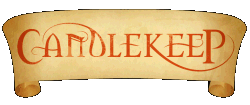| T O P I C R E V I E W |
| Light |
Posted - 10 Feb 2013 : 13:12:55
Okay so, I am ashamed to admit, avatars have always confused me. It seems to me that it has never been clearly stated what they are.
Are they a husk-body created by the deity who can fill it with their divine essence when needed? Are they humans/elves/monsters born and then taken over at a later date and made into an avatar? |
| 4 L A T E S T R E P L I E S (Newest First) |
| Dennis |
Posted - 15 Feb 2013 : 16:36:21
I simply think of them as "surrogates" acting on behalf of a sentient "supercomputer." |
| Ayrik |
Posted - 11 Feb 2013 : 21:29:46
Different game editions have presented different rules for deities and their avatars. In some cases a greater power can reform a practically unlimited number of self-avatars within a matter of moments, while in other cases a demipower requires a decade to reform the only avatar (itself) that it can manage.
Much depends on the game edition, because although the gods are the gods the absolute and relative powers of the pantheon (along with their influence in the Realms) have been redefined many times.
I would say an avatar is a fairly major thing, each one is essentially a complete individual (which happens to be a nearly-identical "clone" of the original) which requires some effort to form, compartmentalize, and reabsorb into the deity. The actual "stuff" of their bodies is literally a manifestation of faith and divine power; I would say the simplest consistent game explanation is that they're formed from planar essence, much the same as fiends are embodiments of pure evil. |
| sleyvas |
Posted - 10 Feb 2013 : 17:55:42
The term has been used loosely over the years. The avatars during the avatar crisis (aka Time of Troubles) would be better referred to as divine vessels. Those were mortals who willingly (or possibly unwillingly) shared their bodies with a divine "essence" until said divine essence could return to the heavens. The classic "avatar" is a construct created by a god and instilled with a portion of his divine power for a mission (and said power returns to him when the mission is done... .hopefully). The manifestations of the Mulhorandi and Untheric deities were another form of avatar, being gods forced to have immortal bodies on earth. Then there were the Mulhorandi and Untheric incarnations, which were the children, grandchildren, and many generations later multiple-greats grandchildren.... of which a few in each new generation would become more than just aasimars... they would become the incarnations of their deity as he blessed them with a portion of his power (I'd imagine, similar to the chosen). |
| Markustay |
Posted - 10 Feb 2013 : 15:12:38
Best as I can tell, they are temporary physical(?) avatars (shells) designed to house a tiny portion of the deity's essence. When no longer needed, they are allowed to 'disperse' back into whatever they were created from (which could be any of the elements, energies, or something completely unknown). I had always assumed they would either be made from something readily available (forming out of a staue of the god, for example), or from an element related to the deity. Or they could even just be a completely no-physical glowing apparition of energy. There is no one thing they are made from, from what I gather - each is unique and created for a specific purpose.
In this way avatars are like icecubes - they will exist so long as they are maintained.
This is mostly IMHO of course, but this is how I always pictured it. An avatar of a god is like when we create an avatar in a video game - it ceases to exist when we are not 'playing it'. |
|
|

